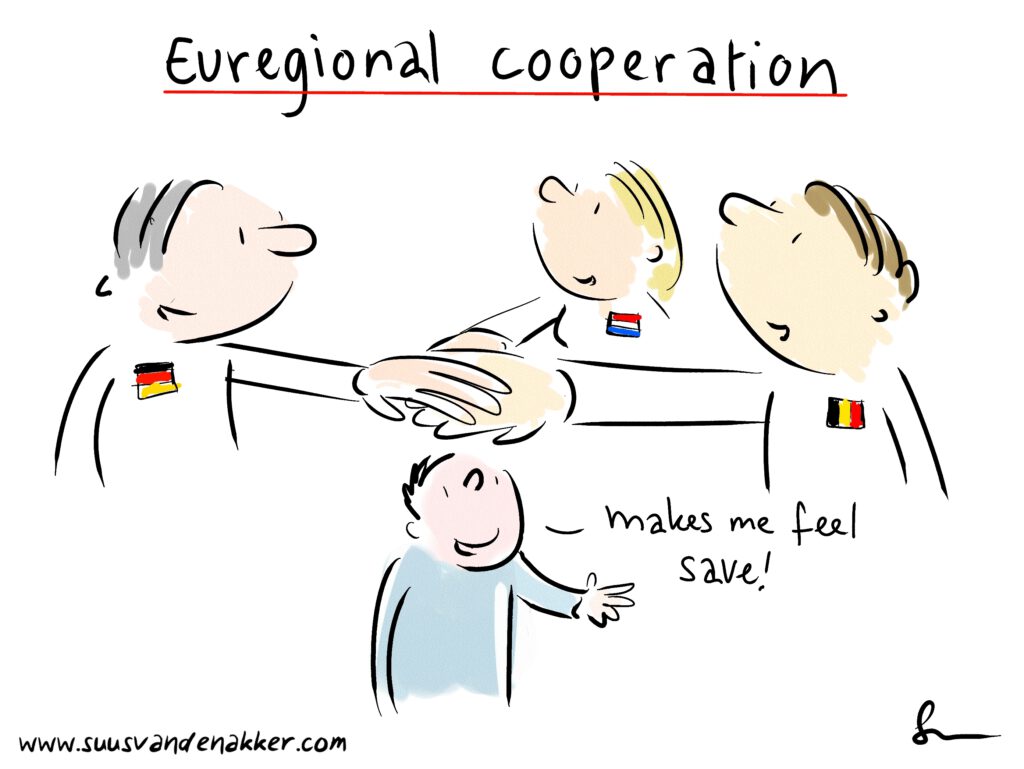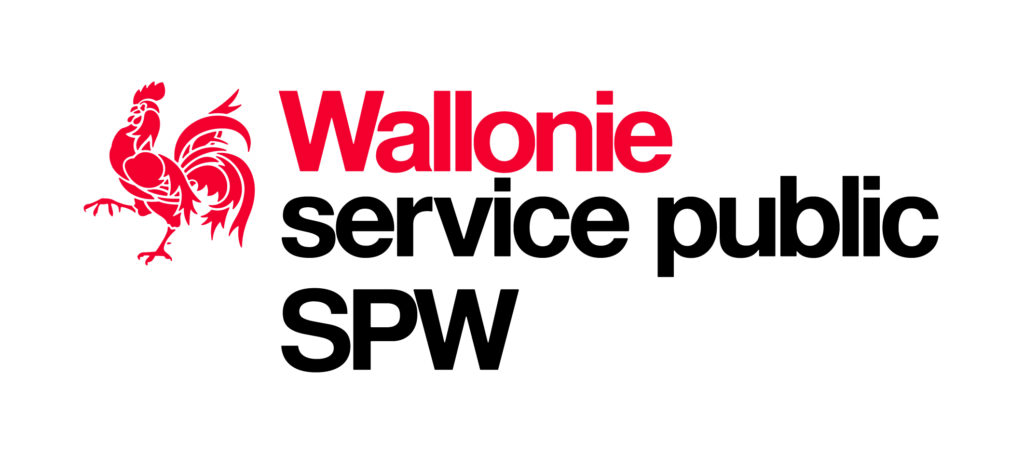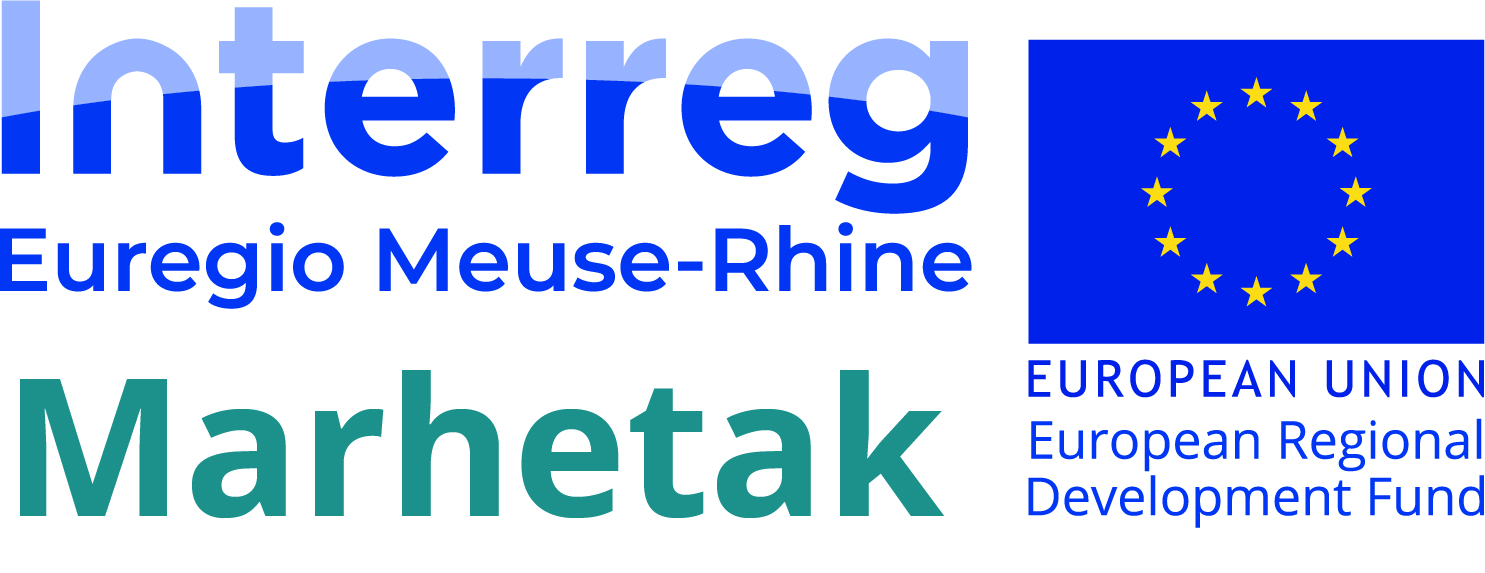About Marhetak
Euregional cooperation
The Euregio Meuse-Rhine (EMR) covers three countries and is a densely populated area with approximately 3.9 million inhabitants. The systems and laws in the three countries are so different that cross-border cooperation requires a lot of regulation and organization. During disasters or accidents, sometimes more ambulances, hospital beds and fire engines are needed than are available in one’s own region. A neighbouring country might also have more specialised equipment, and a foreign hospital may be closer than a hospital in the region of the incident. Likewise, hazardous substances or infectious diseases don’t stop at national borders. Hence, for about 20 years the public services in the EMR, that are responsible for disaster and crisis management, firefighting and emergency medical assistance, have been working together within EMRIC (Euregio Meuse-Rhine Incident Control and Crisis Management) to provide the best possible public service for the citizens of the EMR.
The partners in EMRIC are responsible for the implementation and enforcement of the European, bi- and trinational and regional agreements in the abovementioned thematic areas within the EMR. The involved services are Zuid-Limburg Safety Region and GGD Zuid-Limburg from the Netherlands; Stadt Aachen, Städteregion Aachen and Kreis Heinsberg from Germany; and the Province of Limburg and the Province of Liège from Belgium. The partnership is supported by the EMRIC office which legally is a part of the Veiligheidsregio Zuid-Limburg.

The need for Marhetak
The flood disaster of 14 July 2021 caused great damage, especially in the EMR. Apart from the corona crisis, this is the first major disaster in years to affect the entire EMR. The flood crisis was of such magnitude and occurred so quickly that although there was contact between the crisis services within EMRIC, cooperation was difficult. Due to the enormous demand for assistance in their own country/region, the EMRIC partners were unable to support each other with assistance equipment. Everyone had their hands full with their own crisis, although the dependencies on each other were obvious: water doesn’t stop at borders.
There was a lack of uniform knowledge of the situation and what to expect because the images and forecasts of the weather, water, and soil services were not the same, were not shared or were shared too late. As a result of this, crisis communication towards citizens was different, leading to questions and confusion among EMR citizens. There was no good and uniform picture of the crisis. Overall, crisis services were, by definition, behind in their own region and in the EMR.
Evaluations of crisis management during the flood disaster by external services and agencies have resulted in many learning points, in national and euregional terms. In the Marhetak project, euregional water, weather and soil services will be brought together with the EMRIC crisis management organisations, information and interests will be shared, and learning points will be implemented as much as possible. The project partners Public Service of Wallonia, Federal Public Service Home Affairs Belgium, Waterboard Limburg and Veiligheidsregio Zuid-Limburg in the from of EMRIC (lead partner), aim to robustify euregional cooperation in times of a flooding crisis.
All products/deliverables will have a general character, which means that they can be used in all kinds of crises.
Activities in the project
The activities of the Marhetak project somewhat follow the cycle of a crisis. First, we will work to improve prediction models and information exchange on predicted water and weather situations. Then, the creation of a joint crisis management system (Paragon) will be tested in a live exercise in the EMR. Paragon will also faciliate the information exchange of predicted water and weather situations, and implicitly the differing risk assessment of the situation. Next, a proposal will be developed on how to do a cross-border risk assessment during floodings. After a risk assessment has been done, communication towards citizens is key. For this step, Marhetak will propose methods to harmonize risk and crisis communication towards citizens in the EMR. Additionally, emergency response equipment that can be used cross-border will be purchased. Lastly, the project will propose joint evaluation models used after a crisis.
One additional acitivity will also tackle emergency planning for flooding crises.
Marhetak is financially supported by INTERREG Euregio Meuse-Rhine.

The project partnership

The Federal Public Service Home Affairs has the task of preparing and implementing the policy of the Federal Minister of Home Affairs. It is responsible for:
- Police and civil security
- Aliens policy
- Registration and identification of natural persons
- Management of institutional and regulatory aspects
The National Crisis Centre (NCCN) is a multidisciplinary, interdepartmental, inter-federal and internationally oriented organisation that responds to societal challenges from a central key position, offers strategic support to all its partners in synergy with all security actors and has a high-performance, appropriate infrastructure to deal with crises of any nature and scale. The NCCN is at the service of various authorities and emergency services 24/7. It wants to be a reliable and neutral partner for governments, security services and administrations with a view to strengthening the security and resilience of our country. This translates into the following missions: increasing the resilience of our society, organising emergency planning and crisis management on a national level, ensuring active vigilance and processing passenger data.

The Limburg Water Board manages the surface waters and shallow groundwater in the Netherlands
province of Limburg. The water board is a complete government, with regulatory powers and its own
tax system. It ensures water safety for its inhabitants, combats flooding and drought and
works on good water quality. In addition, the water board purifies waste water.
Waterschap Limburg manages dikes along the Meuse, Ruhr and Niers rivers. Where necessary, they improve these dikes so that they meet the latest safety standards. Waterschap Limburg also creates rainwater buffers and re-designs streams so they can hold more water. In the whole of Limburg, they manage approximately 170 kilometers of embankments along the Meuse, monitor the water level along the dikes and repair damage caused by muskrats and coypu, among other things. Waterschap Limburg also regularly examines whether the dikes still meet the latest safety standards. If this is not the case, the dikes are reinforced, made wider or stronger. Together with other parties, they develop plans to widen the river Maas, so it can drain more water.

The regional crisis center of Wallonia (RCCW) is a directorate of the Public Service of Wallonia (SPW) that operates in the field of emergency planning and crisis management since 2008. Although regions don’t have legal responsibilities in this regard in Belgium, RCCW is dedicated to being the single point of contact for national and local public authorities for regional matters, supporting them in the risk management processes that implies regional competencies (i.e., environment, water management, floods, droughts, mobility, infrastructures).
RCCW is also responsible for coordinating the action of regional public services during crisis periods to offer public authorities unified expertise and actions. RCCW is on this basis regularly an invited member in crisis cells. RCCW also operates a 24/24 monitoring service that warns public authorities and services in case of incidental or emergency situations related to regional competencies, as for example the risk of floods events.
Since its creation RCCW has developed several partnerships with stakeholders involved in risk and crisis management, at the local, national, and international scales. RCCW has been associated in recent years to Interreg projects (AMICE, ALARM).
